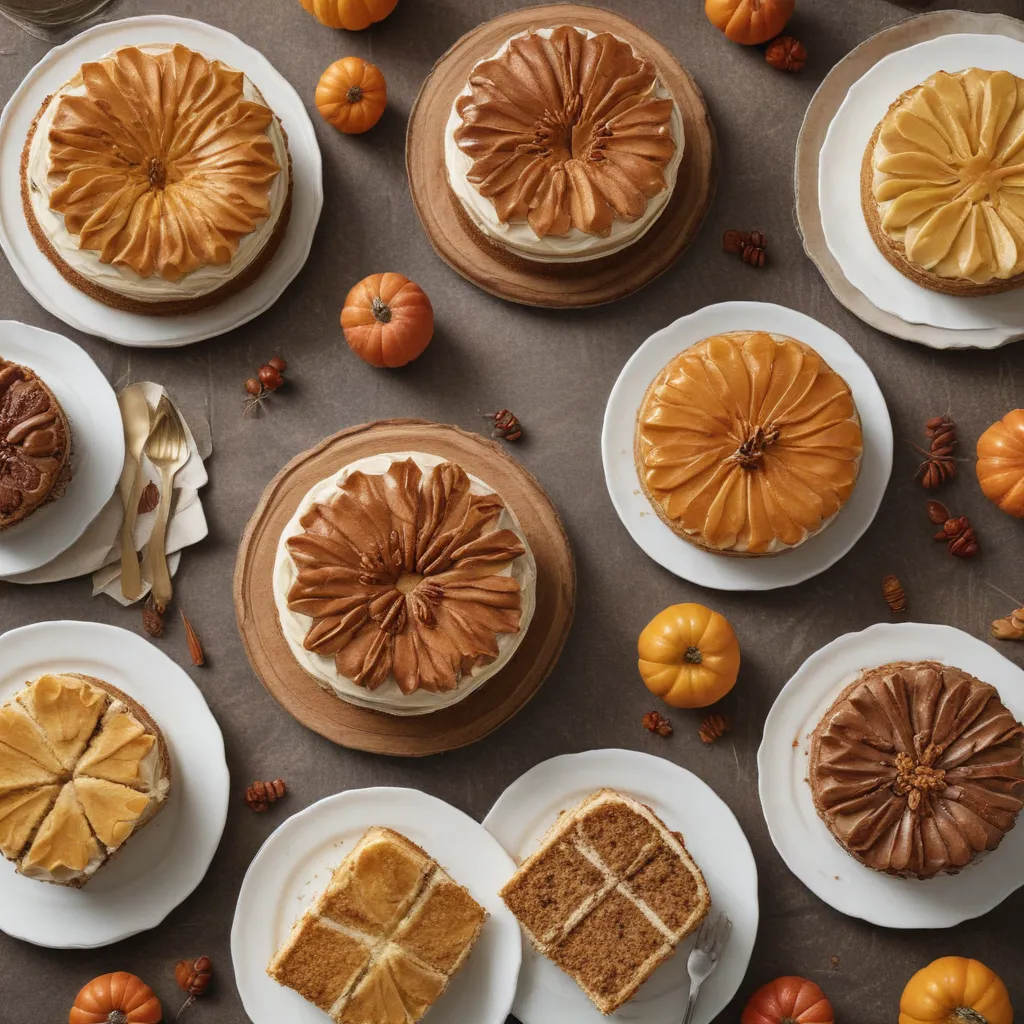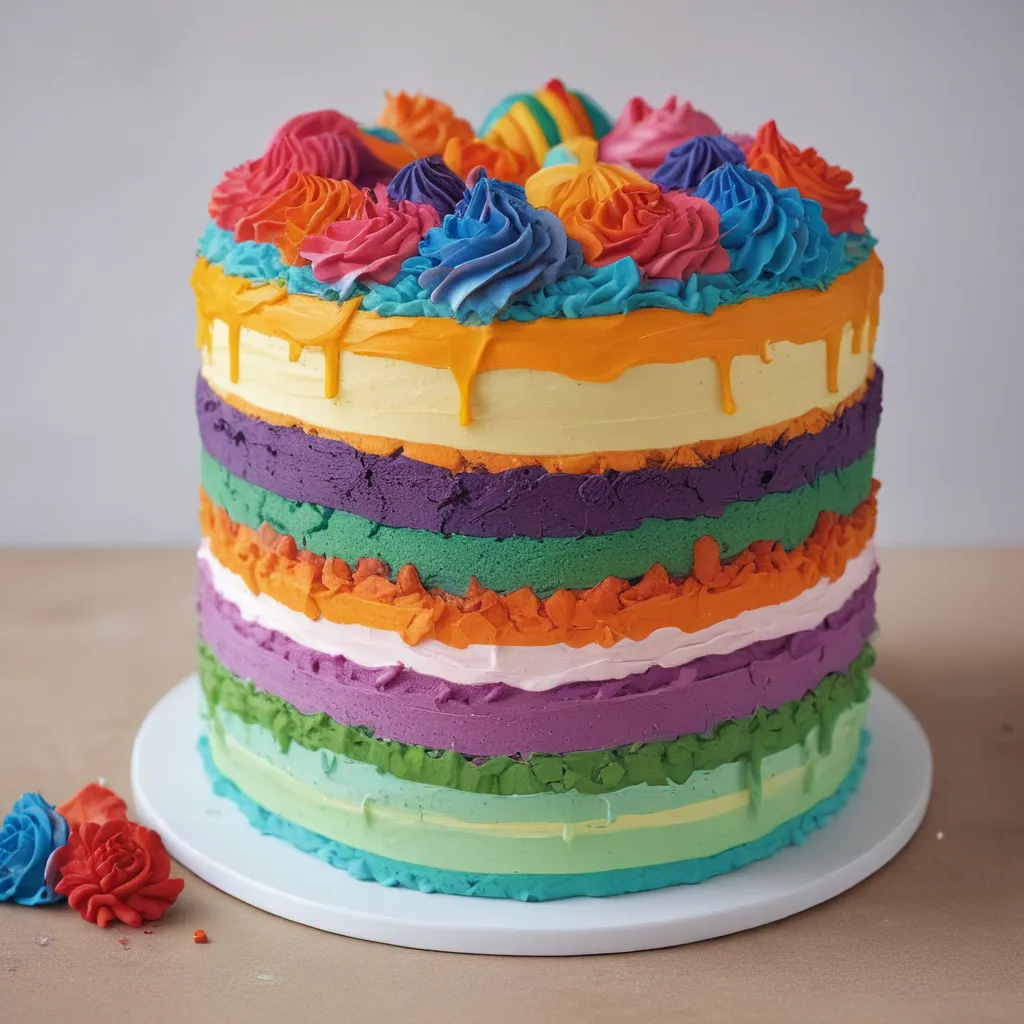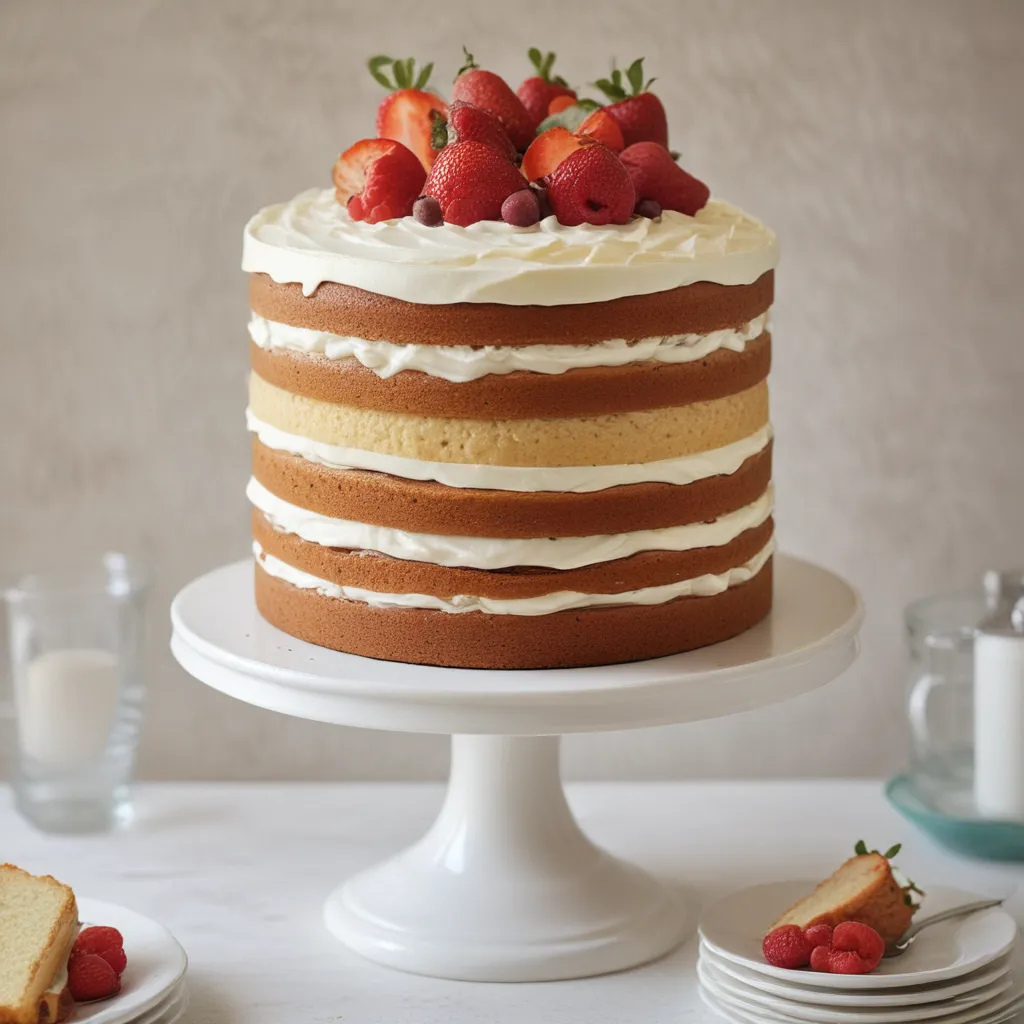Ah, the elusive quest for the perfect crusty exterior on cakes – it’s like searching for the holy grail of baking, am I right? As the owner of Jax Cake Shop in San Jose, I’ve had my fair share of triumphs and tragedies when it comes to achieving that sought-after crunch on the outside and pillowy softness on the inside. But fear not, my fellow cake enthusiasts, for I’m about to share with you the secrets to mastering this delicate balance.
The Science Behind the Crust
Now, I know what you’re thinking – “Science? In my baking? Get outta here!” But hear me out, folks. Understanding the underlying principles at play is key to unlocking the perfect crust. It all comes down to moisture management, chemical reactions, and good old-fashioned physics.
Let’s start with the basics. When we bake a cake, we’re essentially transforming a wet, gooey batter into a firm, structured dessert. As the cake bakes, the heat causes the water molecules to evaporate, leaving behind a network of starch and protein structures. These structures are what give the cake its shape and texture.
But here’s where the magic happens: the outer layers of the cake are exposed to the intense heat of the oven, causing the water molecules to evaporate more rapidly. This rapid evaporation leads to the formation of a crisp, golden-brown crust. It’s like nature’s way of telling us, “Hey, you did good, kid. Now let’s take this cake to the next level!”
Mastering the Maillard Reaction
Now, I know what you’re thinking – “Maillard reaction? Isn’t that something you find in a chemistry textbook?” Well, my friends, this chemical reaction is the key to unlocking the holy grail of crusty cake perfection.
The Maillard reaction is a series of complex chemical reactions that occur when sugars and amino acids are heated together. This reaction is responsible for the delicious, savory flavors we associate with things like roasted meats, toasted bread, and, you guessed it, that glorious cake crust.
To harness the power of the Maillard reaction, we need to ensure that our cake batter has the right balance of sugars and proteins. This means using the right mix of flours, eggs, and other ingredients to create the perfect chemical symphony in the oven.
But don’t worry, you don’t need a Ph.D. in chemistry to achieve this. With a little experimentation and a keen eye for detail, you can learn to manipulate the Maillard reaction to your advantage. It’s like a secret cake-making superpower, and once you unlock it, the possibilities are endless!
Oven Techniques for Crust Perfection
Alright, let’s talk about the nitty-gritty of oven operation. Because let’s be real, even with all the science in the world, if you can’t master the art of oven management, your cake crust will always be a letdown.
One of the most critical factors in achieving the perfect crust is temperature control. You see, the key to a crisp exterior is a hot, dry oven environment. But if the temperature is too high, you risk burning the outside before the inside is fully cooked. And if it’s too low, well, you might as well just call it a day and go for a soft, pillowy texture.
So, how do you find that sweet spot? Well, it takes a bit of trial and error, but here’s a general rule of thumb: preheat your oven to a toasty 400°F (200°C) and then adjust the temperature as needed during the baking process. Keep an eye on your cake and be ready to increase or decrease the heat as necessary.
And let’s not forget about the importance of air circulation. Yep, that’s right – the way the air moves around your cake can have a big impact on the crust development. That’s why it’s a good idea to use a convection oven, if you have access to one. The constant circulation of hot air helps to evenly distribute the heat and ensures that the crust forms evenly all the way around.
Ingredient Choices for Crusty Perfection
Alright, so we’ve covered the science and the oven techniques – but what about the ingredients themselves? After all, you can’t expect to achieve crusty cake nirvana without the right building blocks.
First and foremost, let’s talk about flour. Not all flours are created equal when it comes to crust development. Generally speaking, you’ll want to use a flour with a higher protein content, such as bread flour or all-purpose flour. These flours have more gluten, which helps to create a sturdy structure that can support a crisp crust.
And let’s not forget about the importance of egg yolks. These little golden nuggets are packed with fats and proteins that can help to emulsify the batter and create a tender, moist crumb. But here’s the twist – the fat content in the yolks can also contribute to a crisper crust. It’s all about finding that delicate balance.
But wait, there’s more! Sugar is another key player in the crusty cake game. When it comes to caramelization and Maillard reactions, sugar is the MVP. Look for recipes that call for a mix of granulated and brown sugar – the molasses in the brown sugar can help to deepen the flavor and color of the crust.
Real-World Cake Crust Successes (and Failures)
Now, I know what you’re thinking – “Enough with the science and theory already, let’s talk about some real-world cake crust action!” Well, you got it, my friends.
One of my favorite success stories comes from a customer who was planning a surprise birthday party for her husband. She wanted a showstopping cake with a crisp, golden crust, and boy, did we deliver. By tweaking the recipe to include a higher ratio of bread flour and using a convection oven, we were able to achieve a crust that was the stuff of dreams. The guests were blown away, and the birthday boy was grinning from ear to ear.
But, of course, it’s not all sunshine and rainbows in the world of cake crust perfection. I’ll never forget the time a well-meaning customer asked me to replicate a Pinterest-worthy cake with a beautifully caramelized exterior. Sounds easy enough, right? Well, let me tell you, that cake was a hot mess. The batter was too wet, the oven temperature was off, and the end result was a soggy, doughy disaster. Needless to say, that customer wasn’t too happy with the outcome.
But you know what they say – you live and you learn. And that’s exactly what I did. I took that experience, studied the science, and fine-tuned my oven techniques. Now, when a customer comes to me with a craving for a crusty cake, I’m ready to deliver. It’s all about that relentless pursuit of perfection, folks.
Conclusion: Embrace the Crusty Cake Journey
So, there you have it, my fellow cake enthusiasts – the secrets to mastering the perfect crusty exterior on your cakes. It’s a journey filled with science, experimentation, and a whole lot of delicious trial and error. But trust me, when you finally achieve that elusive crunch, it’ll all be worth it.
Remember, the key is to never stop learning, never stop experimenting, and never stop embracing the ups and downs of the cake crust quest. Because let’s be real, the perfect crust isn’t just about the end result – it’s about the journey itself.
So, what are you waiting for? Preheat your ovens, gather your ingredients, and let’s get to work on creating some truly legendary cake crusts. Who knows, maybe one day your creation will be the talk of the town, just like the ones we bake here at Jax Cake Shop. The possibilities are endless, my friends, so let’s get crusty!





